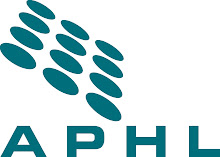Did you know that this week is National Lead Poisoning Prevention Week? And did you know that elevated lead levels in children can cause decreased/delayed learning and behavioral problems? According to CDC, 250,000 US children aged 1-5 years have blood lead levels greater than 10 micrograms of lead per deciliter of blood, the level at which CDC recommends public health actions be initiated. Public health laboratories around the country are testing their state’s children to ensure that necessary actions are taken.
In an effort to test more children, the Kansas Health and Environmental Laboratories began a new project. Their original goal in 2002 was to screen every child at 12 and 24 months of age, but they needed a less traumatic way to collect blood from these toddlers. Using the newborn screening program as a guide, the Kansas lab staff developed a similar method to use filter paper to collect blood spots and analyze them for lead. The filter paper used for the newborn screening program is the same filter paper used for blood lead screening. Other similarities include the ease of specimen collection, transportation and training. The lab developed a new method to test for lead from the dried blood spots and developed a specimen submission form that was easy for nursing staff and others to use in the field.
In 2002 prior to starting the filter paper blood spot screening, the Kansas Public Health Lab analyzed around 3,500 blood lead specimens per year. In 2004 with the new screening in place, the lab increased screening to 14,000 specimens per year. This is an enormous increase and a huge step forward in helping to identify children at risk of lead poisoning and preventing the harmful effects that lead can cause in children.





